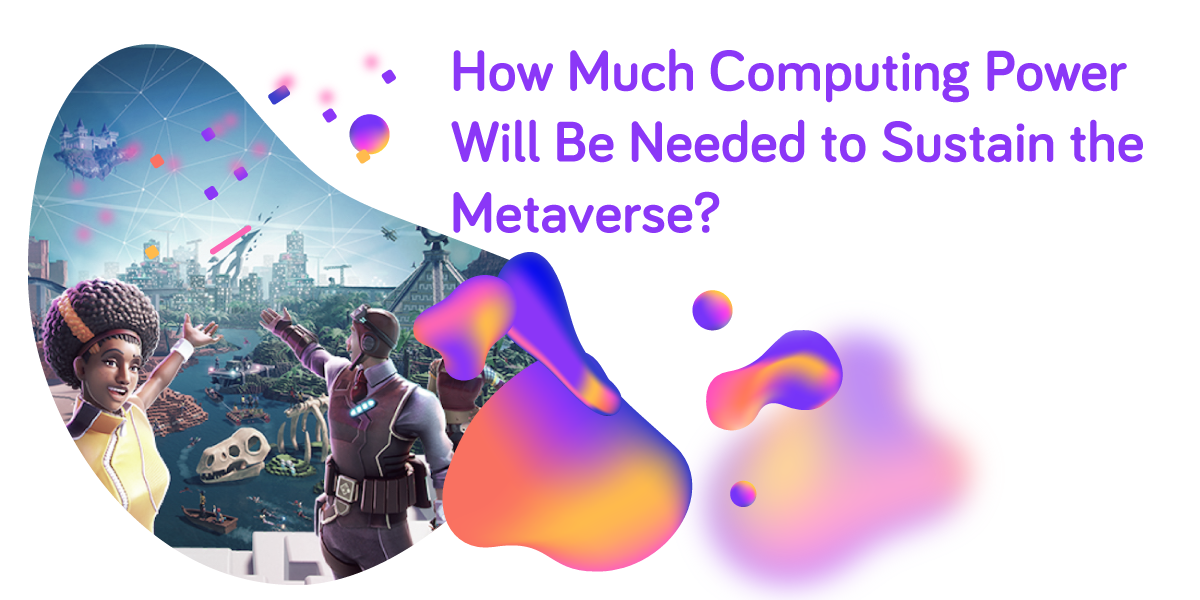As we previously explored in previous articles dedicated to the metaverse, the term “metaverse” refers to a virtual world built of virtual reality (VR) and augmented reality (AR) to form an alternative universe. The Facebook (now Meta) CEO, Mark Zuckerberg described metaverse as “an even more immersive and embodied internet.”
Imagine this scenario: you put on your headset or a pair of goggles comfortably seated in your living room. Flick a switch and there you are walking and exploring the 3D world as an avatar of yourself. At such a moment, you are able to interact with your friends who are using the same technology as you.
Now, we can say so long as these fictional accounts can happen in real life, then the easiest way to describe metaverse is that it is a connected network of 3D virtual worlds that happens alongside real-world life.
Have We Caught up with Metaverse Already?
The iteration of virtual games such as The Sandbox, Second Life, and Decentraland suggest that the concept of the Metaverse is taking off. However, Metaverse is going to need much more technology than what we have today to build a persistent 3D virtual world. If this is the case, what does it mean in terms of computing power?
Intel, one of the leading chip-maker companies reports that to have an efficient Metaverse technology accessible to billions of users in real-time there is the need to increase the computational power about 1,000 times from what we have today, which is quite a lot.
Confirming the same, Intel’s senior vice president and head of Accelerated Computing Systems and Graphics Group, Raja Koduri, underpinned that “We need several orders of magnitude more powerful computing capability, accessible at much lower latencies across a multitude of device form factors.” What this means is that the entire internet will require to undergo some major upgrading.
By now you may be wondering why such powerful computing power is necessary. Well, metaverse represents a utopian convergence of amazing digital experiences that we can say are inspirational to enable efficient, real-time, globally interconnected augmented and virtual reality environments that will allow billions of users to collaborate, play, socialize and work in entirely new ways.
How Do you Need to Prepare for Metaverse Exploration?
With its anticipated high computational power, Metaverse may require you to dump your laptop or desktop under the shelves. You will definitely require a supercomputer. A supercomputer has a very high level of performance that outdoes the computers we currently have in the market. Forget about the Gigahertz (GHz), metaverse will transition to floating-point operations per second (FLOPS) — a measure of processing speed for the supercomputers.
Not So Far Away in the Future
Seems the world is not going to wait so long. Baby steps are being made towards this exciting virtual universe. Meta, for instance, is underway with the development of artificial intelligence (AI) research supercluster (RSC) supercomputer. Meta aims to use the RSC supercomputer to speed AI research to help build the metaverse. Specifically, RSC will be used to build new and advanced AI models that enable hundreds of different languages to develop new augmented reality.
However, even as the world looks forward to the new era of utopian convergence technology promised by Metaverse, we need to reconsider the ethical implications of using it and more generally.
Keep up with Your Friendly Crypto Exchange while we continue to provide you with reliable information about the unfolding developments in Metaverse technology. For an advanced and secure trading experience, join IXFI and kickstart your journey.
Disclaimer: The content of this article is not investment advice and does not constitute an offer or solicitation to offer or recommendation of any investment product. It is for general purposes only and does not take into account your individual needs, investment objectives and specific financial and fiscal circumstances.
Although the material contained in this article was prepared based on information from public and private sources that IXFI believes to be reliable, no representation, warranty or undertaking, stated or implied, is given as to the accuracy of the information contained herein, and IXFI expressly disclaims any liability for the accuracy and completeness of the information contained in this article.
Investment involves risk; any ideas or strategies discussed herein should therefore not be undertaken by any individual without prior consultation with a financial professional for the purpose of assessing whether the ideas or strategies that are discussed are suitable to you based on your own personal financial and fiscal objectives, needs and risk tolerance. IXFI expressly disclaims any liability or loss incurred by any person who acts on the information, ideas or strategies discussed herein.



